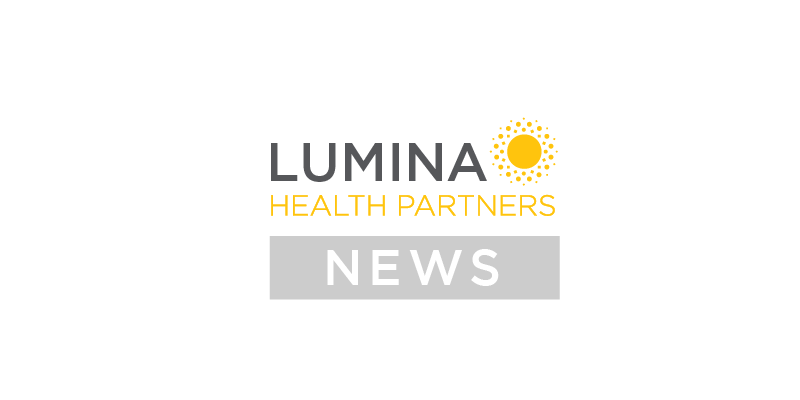Lucy Zielinski and Dan Marino follow up on Zielinski's successful Virtual Conference presentation by tackling some of the most challenging aspects of telehealth during the COVID-19 pandemic.
Daniel J. Marino

Recent Posts:
Chicago, IL - Throughout the continuing COVID-19 pandemic, healthcare organizations have taken the lead, tirelessly caring for their patients, our communities, and our nation in unparalleled fashion.
Lumina Health Partners, a long-time advisor for hospitals and physicians who are transforming clinical care to a value-based world, has developed a playbook to help these organizations launch a financial recovery strategy, involving the alignment of key finance, contracting, strategy and clinical leaders.
How Healthcare Providers Can Avoid Being at a Disadvantage When Negotiating Risk Contracts
Risk stratification is an effective short-term strategy for providers seeking to negotiate risk contracts from a position of strength.
To gain leverage in risk-based contracting, healthcare finance leaders require a means to identify the true cost of care at the patient level based on actual care services and supplies delivered. But most organizations are years away from possessing such a capability, so their finance leaders require an interim solution to help them gain an advantage in their contract negotiations with payers.
Facing growing pressure from insurers to assume more financial risk, healthcare providers are exploring ways to better manage cost and utilization through risk-based contracts.
Unfortunately, most organizations tend to focus more on the contract itself and fail to give adequate attention to planning out what they will do once the agreement is signed.
Effective contract negotiation and execution depend on the same set of capabilities. To succeed in risk-based contracting, providers need to build an infrastructure that supports every dimension of risk management—from risk modeling and contract design to population health strategy.
Here are four elements that will be instrumental to building this infrastructure.
On Sept. 20, I had the honor of presenting to a standing-room-only crowd at Becker’s Hospital Review 4th Annual Health IT + Revenue Cycle Conference in Chicago. I spoke about how clinical and finance leaders need a data-driven value model to plan the scale and pace of investments into a population health strategy and to move confidently into value-based contracting.
Most healthcare leaders understand the importance of population health and building the most optimal strategy to position their organizations for success in value-based care. Building the tools to manage patient populations is key to improving outcomes while bending the cost curve in American healthcare.
Nearly every aspect of the healthcare world is changing―constantly, unpredictably, and quickly. As stakeholders navigate their various paths, knowing what to expect can help with decision making about compliance, risk, cost, and more. We have identified 7 areas that healthcare leaders must navigate to stay ahead of change and remain agile, effective, and profitable.
Healthcare industry veterans Daniel Marino and Lucy Zielinski have co-founded Lumina Health Partners, a Chicago-based consulting firm that offers business advisory and leadership solutions to healthcare organizations.
The firm’s experienced team of consultants works hand-in-hand with clients to develop transformative results for the most difficult value-based strategy, digital innovation and analytics, clinical transformation, and leadership and governance challenges. Using a “lead to support” approach, the firm’s consultants create and activate strategies and plans that enable medical groups, hospitals, and health systems to realize measurable strategic, financial, clinical, and operational goals.
With recent changes to the Medicare Shared Savings Program (MSSP), all accountable care organizations (ACOs) need to pay closer attention to their compliance obligations and be prepared to make changes quickly. Each time the Centers for Medicare and Medicaid Services (CMS) updates its MSSP rules, as it did in 2016, it frequently follows these changes by auditing ACOs to determine whether all its rules are being followed. As in 2016, ACOs that identified potential compliance concerns and operationally addressed these concerns limited their potential exposure.
The Centers for Medicare & Medicaid Services (CMS) published its Medicare Shared Savings Program (MSSP) final rule in December 2018, and the final rule overhauls the MSSP and takes a new approach to transitioning providers to performance-based risk arrangements under accountable care models. A National Association of ACOs survey released in May 2018 indicated that 71 percent of the 82 ACOs that had been participating in Track 1 since 2012 or 2013 were likely to drop out of the MSSP before 2019, when they would be forced to enter a two-sided risk model (Track 1+, 2, or 3).








